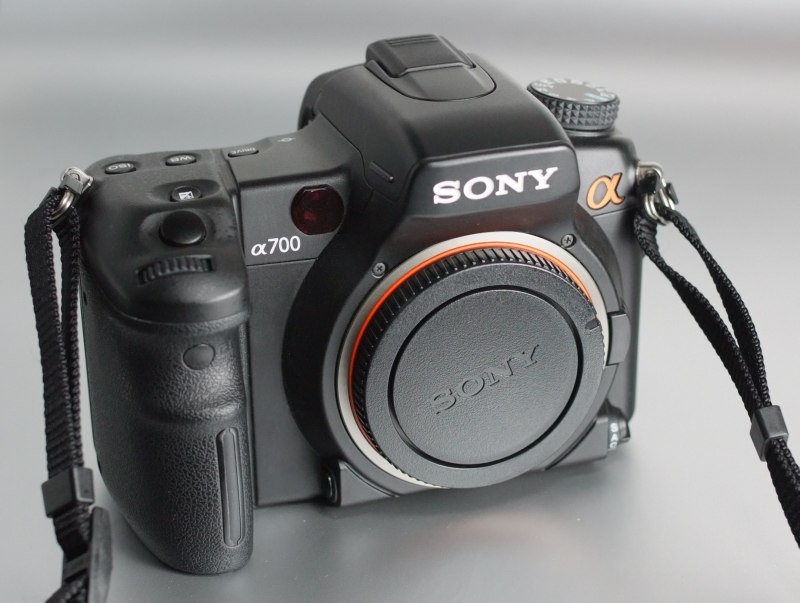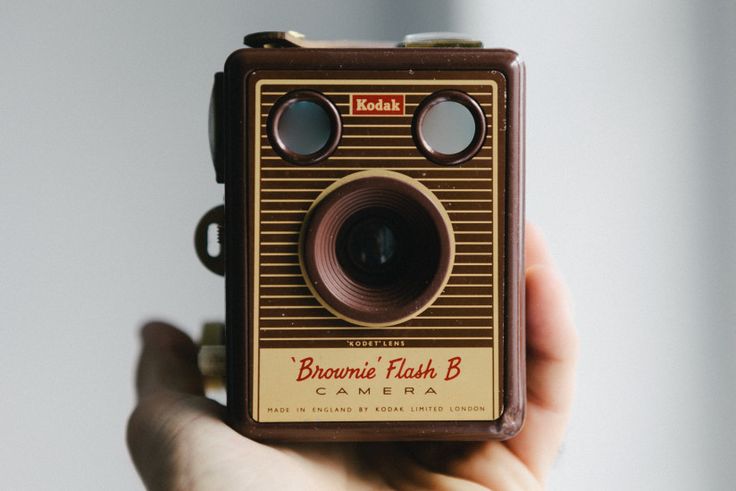The camera industry has been steadily growing since it first began, and as such new camera brands continue to emerge. The following list provides a high-level summary on some of the companies that have made their mark in this ever-changing market.
Nikon

Nikon was created by former Nikon employees Kobayashi and Yamashita on July 25th, 1917 after taking control of the company from previous owners Mikimoto Kōgaku ( Mikoyan & Gurevich MiG ). The name Nikon comes from Nippon Kogaku which literally translates to "Japan Optical". Nikon's first digital SLR, the D1, was introduced in 1999. It was also one of the first manufacturers to release an APS-C DSLR with its cropped sensor D100.
In May 2008, Nikon released a new line of digital cameras using the COOLPIX branding. And in late 2011 they announced their first DSLR camera with video recording capabilities, the Nikon D4S. Today Nikon makes everything from Digital SLRs, Full Frame DSLRs, Mirrorless Cameras to Action Cameras and 360° cameras.
Main features:
Their cameras are typically on the expensive side, but they have a great range of lenses to match.
Nikon has always been known for having excellent image quality and fast focusing systems which makes it the first choice for many professional photographers.
Advantages:
- Nikon has a huge range of lenses and accessories available for purchase.
- Nikon's DSLRs have excellent focusing capabilities due to their 51 point system.
Disadvantages:
- Image quality is good, but not as great as Canon cameras can produce.
- Nikon's DSLRs are generally more expensive than Canon's.
Canon
Canon was founded in 1937 by Goro Yoshida, Saburo Uchida, and Takeo Maeda after the company split from Tokyo Koki Co., Ltd (Tokyo Keiki). The name comes from "kan" meaning contour or summit, and "nun" which is short for navigation apparently. They began as producers of camera lenses but eventually progressed to producing 35mm film SLR cameras during World War Two. Their first digital SLR was the EOS D30 released back in 2000; it didn't feature Live View nor did it support video recording capabilities.
Canon has always focused on creating cameras that are easy to use, and their DSLRs have always had good ergonomics. When the EOS D30 was released it caused an interruption in their SLR camera business because so many other manufacturers were releasing lenses for Nikon's F mount at the time.
This problem wasn't solved until 2010 when Canon finally switched to a lens mounting system of its own called EF-S.
Main features:
Their cameras feature very fast and accurate focusing capabilities thanks to their 19 point AF systems which cover 80% of the frame.
They also produce some of the best image sensors available today as well as some excellent cameras capable of shooting high-quality video such as the EOS 5D Mark III.
Canon cameras are often considered to be the best all-rounders because they are easy to use, have great image quality, and are relatively affordable.
Advantages:
- Canon has a wide range of lenses available, many of which are very affordable.
- Their cameras typically have great ergonomics, making them easy to operate.
- Canon produces some of the best image sensors in the industry.
Disadvantages:
- They don't typically focus on innovative features as much as other brands such as Sony and Panasonic do.
- Some of their DSLRs can be quite expensive when compared to similar models from Nikon.
Everyone knows that Canon and Nikon cameras are among the most popular cameras in the global market. Sometimes it is difficult to choose which camera is better - Nikon or Canon.
Sony

Sony was founded in 1946 as Tokyo Tsushin Kogyo and renamed Sony in 1958. It all started when Masaru Ibuka rented a small room in Tokyo and began repairing radios. His business partner, Akio Morita, helped him turn that small repair shop into the giant electronics company it is today.
Their first digital SLR camera was the Sony Alpha DSLR-A100 which was released back in 2006. It featured a 10-megapixel sensor and was marketed as an entry-level DSLR.
In 2012 they announced the release of their new mirrorless camera system, the Sony NEX-7. This camera featured a 24-megapixel sensor and was aimed at more professional users.
Main features:
Sony has always been a leader in the digital camera brands market and they continue to produce some of the best cameras available today.
Their mirrorless camera system is one of the most innovative on the market and continues to grow in popularity.
Sony cameras often focus on innovative features such as 5-axis image stabilization and 4K video recording.
Advantages:
- Sony is a leader in innovation and produces some of the best digital cameras available today.
- Their mirrorless camera system is one of the most innovative on the market.
Disadvantages:
- Some of their cameras are very expensive.
- Sony's lens range is somewhat limited compared to Canon and Nikon.
Panasonic
Panasonic was founded in 1918 as Matsushita Electric Housewares Manufacturing Works. The name Panasonic wasn't adopted until 2008; it is a combination of the words pan, meaning universal, and sonus, meaning sound.
Their first digital SLR camera was the Panasonic Lumix DMC-G1 which was released back in 2008 thanks to their partnership with Leica. It featured a 14-megapixel sensor and could record 720p video at 30fps. The G1 was well received by both professional photographers and enthusiasts alike thanks to its excellent image quality for both stills and videos along with its interchangeable lenses system (Micro Four Thirds).
In 2012 Panasonic announced the release of their new mirrorless camera system, the Panasonic Lumix DMC-GH4. This camera featured a 16-megapixel sensor and was aimed at more professional users.
Main features:
Panasonic has always been a leader in digital photography and they continue to produce some of the best cameras available today.
Their mirrorless camera system is one of the most innovative on the market and continues to grow in popularity.
Panasonic cameras often focus on innovative features such as 5-axis image stabilization and 4K video recording.
Advantages:
- Panasonic is a leader in innovation and produces some of the best digital cameras available today.
- Their mirrorless camera system is one of the most innovative on the market.
Disadvantages:
- Some of their cameras are very expensive.
- Panasonic's lens range is somewhat limited compared to Canon and Nikon.
Olympus
Olympus was founded in 1919 as a microscope maker. It began producing binoculars in 1935, followed by cameras in 1936. In 1959 it produced the first twin-lens reflex camera for 35mm film. Olympus entered the digital age early, with the introduction of the DSC-1, a 1.3-megapixel digital camera, in 1996.
Today Olympus offers a wide range of products that include Digital SLRs (Mirrorless and DSLR), Compact Cameras, Tough Cameras, Waterproof Cameras, Bridge Cameras, and even 16mp 4/3 mirrorless camcorders.
Main features:
Olympus has a wide range of products that cover a wide range of photography needs.
They offer both digital SLRs and mirrorless cameras, which gives users a choice between traditional and more modern camera systems.
Olympus cameras often focus on innovative features such as 5-axis image stabilization and 4K video recording.
Advantages:
- Olympus offers a wide range of products that cover a wide range of photography needs.
- Their cameras are often praised for their excellent image quality.
Disadvantages:
- Some of their cameras are expensive compared to other brands.
- Their lens range is also limited compared to Canon and Nikon.
Kodak

Kodak was founded in 1888 by George Eastman. His first product was the Kodak camera, which was introduced in 1888. The Kodak Brownie followed in 1900 and made photography affordable for the masses. In 1976 Kodak entered the digital age with the introduction of the Kodak DCS, a 1.3 megapixel digital SLR that used a Nikon F-mount lens.
Today Kodak offers a wide range of products that include Digital Cameras, Smartphones, Camcorders, 3D Printing, and more.
Main features:
Kodak offers a wide range of products that cover a wide range of photography needs.
They offer both digital cameras and smartphones, which gives users a choice between traditional and more modern camera systems.
Kodak cameras often focus on innovative features such as 5-axis image stabilization and 4K video recording.
Advantages:
- Kodak offers a wide range of products that cover a wide range of photography needs.
- Their cameras are often praised for their excellent image quality and value for money.
Disadvantages:
- Some of their cameras are old-fashioned
Fujifilm
Fujifilm was founded in 1934 as a manufacturer of photographic films. In 1948 they introduced the Fujica camera, Japan's first 35mm camera. In 1963 they entered the digital age with the Fujitsu LSI 1101, Japan's first commercial digital camera. Today Fujifilm offers a wide range of products that include Digital Cameras, Film Cameras, Instax Cameras, Photo Printers, and more.
Main features:
Fujifilm offers a wide range of products that cover a wide range of photography needs.
They offer both digital cameras and film cameras, which gives users a choice between traditional and more vintage cameras.
Fujifilm cameras often focus on innovative features such as 5-axis image stabilization and 4K video recording.
Advantages:
- Cheap and affordable;
- Good quality for this price.
Disadvantages:
- Materials are not so good as compared to other brands
Leica
Founded in 1849 in Wetzlar, Germany, and is best known for its premium rangefinder cameras. They offer a wide range of products that include Digital Cameras, Smartphones, Compact Cameras, and more.
Main features:
Their cameras are known to be exceptional in terms of image quality and performance. They often attract the attention of professionals such as wedding photographers and fashion photographers due to their excellent build quality, durability, and detail resolution.
Advantages:
- Have nice construction
- Their cameras are often praised for their excellent image quality and performance.
Disadvantages:
- The price of Leica cameras can be quite high (over $3,000).
Conclusion
All the camera brands we mentioned above offer excellent cameras, but they also differ in what features they focus on. Nikon and Canon are well-known for their wide lens range, while Fujifilm and Leica are known to be exceptional in terms of image quality. Kodak is respected for its excellent value for money and innovation.